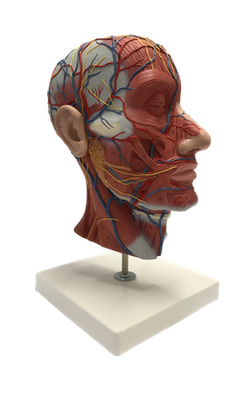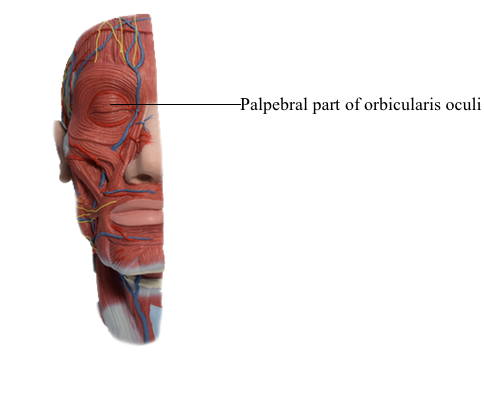Main Model

Muscles : 30 Palpebral part of orbicularis oculi

Muscles of Orbital Opening
The function of the eyelids (Latin palpebrae) is to protect the eyeballs from injury and excessive light. The eyelids also keep the cornea moist by spreading the tears.
The orbicularis oculi closes the eyelids and wrinkles the forehead vertically. Its fibers sweep in concentric circles around the orbital margin and eyelids. Contraction of these fibers narrows the palpebral fissure (aperture between the eyelids) and assists the flow of lacrimal fluid (tears) by bringing the lids together laterally first, closing the palpebral fissure in a lateral to medial direction. The orbicularis oculi muscle consists of three parts:
1. Palpebral part: arising from the medial palpebral ligament and mostly located within the eyelids, gently closes the eyelids (as in blinking or sleep) to keep the cornea from drying.
2. Lacrimal part: passing posterior to the lacrimal sac, draws the eyelids medially, aiding drainage of tears.
3. Orbital part: overlying the orbital rim and attached to the frontal bone and maxilla medially, tightly closes the eyelids (as in winking or squinting) to protect the eyeballs against glare and dust.
When all three parts of the orbicularis oculi contract, the eyes are firmly closed.
Muscle: Orbicularis oculi (Orbital sphincter)
Origin: Medial orbital margin; medial palpebral ligament; lacrimal bone
Insertion: Skin around margin of orbit; superior and inferior tarsal plates
Main Action(s): Closes eyelids - palpebral part does so gently; orbital part tightly (winking)